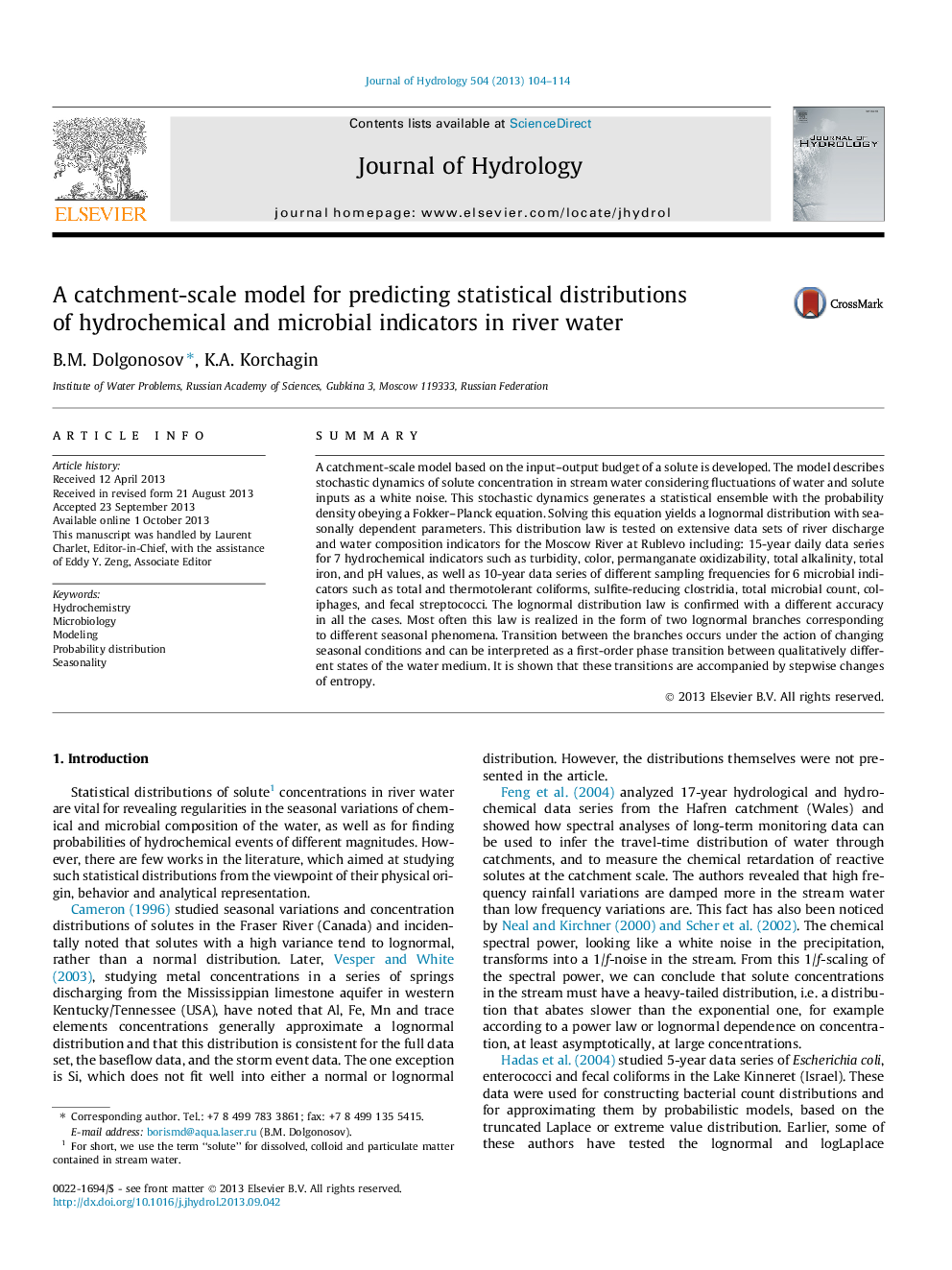| کد مقاله | کد نشریه | سال انتشار | مقاله انگلیسی | نسخه تمام متن |
|---|---|---|---|---|
| 4576078 | 1629944 | 2013 | 11 صفحه PDF | دانلود رایگان |

• New probabilistic model yields statistical distribution of contaminant concentrations at catchment outlet.
• Concentration distribution obeys lognormal law with seasonally specific parameters.
• Model was tested on long-term hydrochemical and microbial data series.
• Component distribution splits into several lognormal branches.
• Transition between branches is phase transition between qualitatively different states of water.
SummaryA catchment-scale model based on the input–output budget of a solute is developed. The model describes stochastic dynamics of solute concentration in stream water considering fluctuations of water and solute inputs as a white noise. This stochastic dynamics generates a statistical ensemble with the probability density obeying a Fokker–Planck equation. Solving this equation yields a lognormal distribution with seasonally dependent parameters. This distribution law is tested on extensive data sets of river discharge and water composition indicators for the Moscow River at Rublevo including: 15-year daily data series for 7 hydrochemical indicators such as turbidity, color, permanganate oxidizability, total alkalinity, total iron, and pH values, as well as 10-year data series of different sampling frequencies for 6 microbial indicators such as total and thermotolerant coliforms, sulfite-reducing clostridia, total microbial count, coliphages, and fecal streptococci. The lognormal distribution law is confirmed with a different accuracy in all the cases. Most often this law is realized in the form of two lognormal branches corresponding to different seasonal phenomena. Transition between the branches occurs under the action of changing seasonal conditions and can be interpreted as a first-order phase transition between qualitatively different states of the water medium. It is shown that these transitions are accompanied by stepwise changes of entropy.
Journal: Journal of Hydrology - Volume 504, 11 November 2013, Pages 104–114